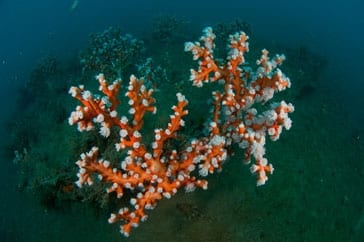October 15, 2010
New Species Found!
BY: Oceana Admin
 The Oceana Explorer was added to our operation on the third day of our work on the Gulf of Cádiz. Last night, we began coordination with the launch team for the following day because we will work with the divers from the Explorer and with the ROV from the Ranger.
The Oceana Explorer was added to our operation on the third day of our work on the Gulf of Cádiz. Last night, we began coordination with the launch team for the following day because we will work with the divers from the Explorer and with the ROV from the Ranger.
At 8 a.m., the aroma of coffee was already luring us from our beds. A few minutes later, the divers arrived with all of the photography gear that they will need. Without wasting any time, we set sail for our first sampling point with the ROV. Outside the proposal to expand the Doñana marine area, the seabeds are muddy with a scant abundance of fish. We barely observed sessile species, and the seascape is somewhat monotonous as a general rule. Nevertheless, the good part is that we have not seen any mark from trawlers or remains of fishing gear or garbage.
When we moved between 3 or 4 miles offshore, the seascape changed with the presence of rocks. Major forests of tree coral (Dendrophyllia ramea) appear, and amid the rocks, fish like African striped grunts (Parapristipoma octolineatum) and a sargo (Pagrus sp.) here and there crossed our path from time to time. A fish, the swallowtail sea perch (Chromis sp.), attracted our attention because it doesn’t seem like the typical species in this area. Therefore, we tried to capture images to confirm it. But in addition to that, a finding opened up our eyes and excited us: we discovered an area with plenty of golden cup coral (Astroides calycularis). This species, besides being precious, had not before been described in the Gulf of Cádiz because it is typically found in the Mediterranean and the Strait of Gibraltar, and it is cataloged as vulnerable on the Andalusian and Spanish Red Lists.
MOST RECENT
August 22, 2025
Corals, Community, and Celebration: Oceana Goes to Salmonfest!



